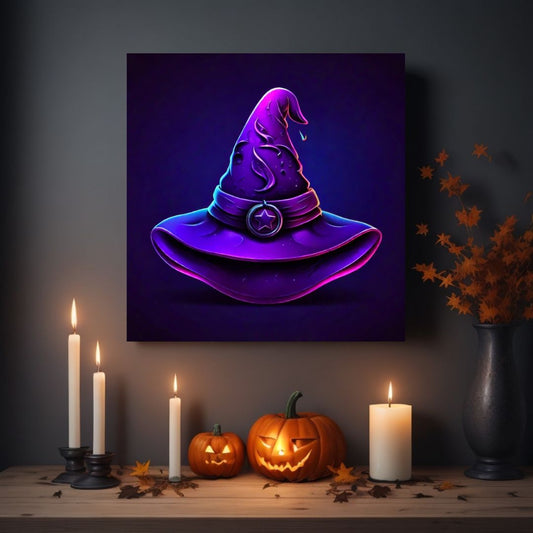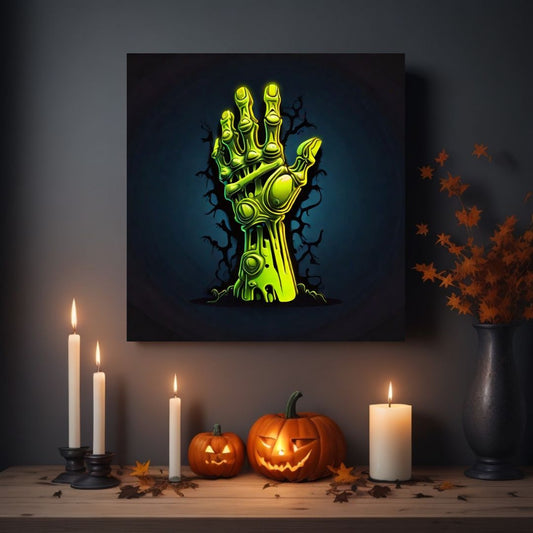Everyone has an inner artist waiting to break free, and dabbling in drawing is a fantastic way to express yourself creatively. Whether you are a seasoned sketcher or someone who struggles to draw a straight line, drawing can be a deeply satisfying and enjoyable experience.
You might think you need to be born with a magic wand in your hand to draw well, but in reality, drawing is a skill that can be developed with practice and patience.
The key to unlocking your artistic potential does not lie in intensive courses or expensive materials; rather, it's about finding inspiration in the simple things around you. Sometimes, all it takes is a gentle nudge in the right direction to get those creative juices flowing.
That's where we come in. We've curated a list of five cool and easy things to draw that will provide immediate inspiration. These drawing ideas are designed to be approachable, requiring nothing more than a piece of paper and a pencil.
- Quirky cartoons or doodles
- Stunning nature scenes or elements
- Everyday objects with an artistic twist
- Animals in a simplistic or abstract style
- Patterns and designs that allow for freedom and improvisation
Each suggestion is a stepping stone, a way to practice and refine your skills while also being tons of fun. So grab your drawing tools and prepare to journey into the world of lines, shapes, and shades, where every stroke brings you closer to unveiling the artist within.
Best Drawing Ideas
I have put together a few simple and definitely super cool things to draw. No matter your skillset, you will find something interesting to draw and spend your free time in a great and cozy way.
Drawing 1: Doodles and Patterns
Doodling can be a delightful gateway into the whimsical world of spontaneous art. It's an act where the mind wanders through a pen, creating imaginary landscapes, quirky characters, or repetitive patterns. Here's how anyone can dive into this playful practice:
Stumble into Shapes and Symbols
- Grab a sheet of paper and a pen or pencil.
- Without overthinking, start drawing basic shapes: circles, squares, triangles.
- Let these shapes morph into symbols or objects, like suns, moons, stars, or faces.
Invent Imaginary Friends
- Scribble without purpose and see if any shapes start to resemble creatures or people.
- Add details to bring these figments to life: eyes, mouths, antennae, or quirky hats.
Ponder in Patterns
- Choose a simple element, like a swirl or a zigzag.
- Repeat it across the page, varying size and orientation for visual interest.
- Play with filling in areas to create contrast and depth.
Entangle With Zentangles
- Start with an outline of any form.
- Fill the interior with a variety of patterns: stripes, dots, dashes, or any repetitive design.
- Focus on flowing from one pattern to the next, keeping your hand loose and relaxed.
Hang Loose with Lines
- Draw a wavy line across the page.
- Let this initial line guide subsequent lines, creating a wave-like effect.
- Explore line thickness and spacing for a dynamic look.
From these simple exercises, a complex world of creativity unfolds. The beauty of doodles is that there is no right or wrong.
They are the echoes of an individual's creative psyche, making each scrawl as unique as its creator. So, next time when seeking immediate inspiration, just let the pen wander and watch a world of whimsy emerge.
Step-by-Step Guide for Simple Doodles That Spark Creativity
Doodling can be a playful and imaginative way to jumpstart your creativity. Here’s a simple guide to get you doodling:
-
Start with Basic Shapes:
-
Begin with circles, squares, and triangles. These shapes can be the foundation for more complex drawings.
-
-
Add Character with Faces:
-
Turn your shapes into characters by adding eyes, mouths, and noses. Expressions can vary from happy to grumpy to surprised!
-
-
Bring in Patterns:
-
Use lines, dots, and dashes to fill in areas, creating texture and depth. Try repeating patterns or making each one unique.
-
-
Incorporate Nature Elements:
-
Doodle leaves, flowers, or even tiny insects to bring a natural feel to your creation.
-
-
Experiment with Line Weights:
-
Use different pressure with your pen or pencil to create lines that are thick, thin, or varied. This can add a dynamic touch to your doodles.
-
-
Create Movement:
-
Swirling lines or action marks can give the impression that your doodle characters or elements are moving within the page.
-
-
Tell a Story:
-
Start to combine elements to make a scene or tell a simple story with your doodles. Perhaps the characters are interacting or there's a weather effect like rain or sunshine.
-
-
Embrace the Mistakes:
-
Don't worry about making everything perfect. Unexpected lines or shapes may turn into the most exciting part of your drawing.
-
-
Fill the Page:
-
Keep adding elements until you've filled up the whole page. Overlapping shapes and patterns can create a sense of complexity and wholeness.
-
-
Reflect and Iterate:
-
Take a moment to look at what you've created. Now that you're warmed up, start a new doodle incorporating the things you liked best about the first.
-
Remember, the key to doodling is to let your imagination flow freely. There's no right or wrong in this artistic expression, so let your creativity fly and enjoy the process!
Drawing 2: Nature-Inspired Sketches That Anyone Can Master
Nature offers endless inspiration for artists, and some of the most delightful drawings come from the simplicity of the natural world. Here's how anyone can start creating nature-inspired sketches with ease.
-
Leaves and Trees: Start with the basics – leaves. They come in various shapes and sizes and are perfect for practicing lines and shading. Once comfortable, sketch a tree. Begin with a trunk and spread out branches in intricate patterns that mimic those found in nature.
-
Flowers: Flowers are a fantastic starting point for learning curves and adding color to your work. A simple daisy or tulip can be drawn with just a few curved lines for petals and a circle for the center. As skills develop, try more complex flowers like roses or sunflowers, adding detail to the petals and leaves for depth.
-
Landscapes: For a grander project, landscapes can be as simple or detailed as desired. A basic mountain range can be created with a series of triangles and a sun setting behind them. Add a river or a lake at the bottom with wavy lines, and you've got a picturesque scene.
-
Animals: Start with the simplest forms, such as a bird or fish. With an oval body and a triangle for a beak or fins, you can create a cute creature. Practice different textures for fur or scales to bring your animal sketches to life.
-
Insects: Channel your inner entomologist and sketch insects like butterflies or beetles. The symmetrical nature of their wings makes them great subjects for practicing proportions.
Remember, nature doesn't demand perfection. Each leaf and petal is unique, so every drawing will carry its charm.
With practice, these nature-inspired sketches will not only be easy to master but will also imbue a sense of calm and connectedness with the environment.
Simple Natural Elements to Sketch for Relaxation
Sketching can be a serene activity, especially when the subjects are as forgiving and varied as the natural elements around us. For those looking to unwind with pencil and paper, here are some suggestions:
-
Leaves: Start with a single leaf - they come in countless shapes and sizes. Observe the veins, the stem, and the jagged or smooth edges. Leaves can be as detailed or as simple as you wish, making them perfect for relaxation.
-
Clouds: Look up, and you'll find an ever-changing canvas. Clouds are fantastic for freeform drawing. Their soft, fluffy shapes can take on as many forms as your imagination allows. Don't worry about precision; let your hand wander across the page as you emulate the sky's tranquility.
-
Rocks and Stones: These earthy subjects offer a way to practice shading and perspective without the stress of perfection. Their irregular shapes and varied textures provide an excellent opportunity to play with light and shadow.
-
Flowers: From a daisy to an intricate rose, flowers can be simplified or drawn in detail. Focus on the symmetry of the petals, or just let the shapes flow naturally. The beauty of sketching flowers lies in their diversity and the personal touch each artist can add.
-
Water: Whether it's a simple pond, a flowing river, or ocean waves, water can be incredibly meditative to sketch. The key is not to capture every detail but to let the lines and shading suggest movement and flow.
As you sketch these natural elements, remember to breathe and enjoy the process. Each stroke should not just contribute to the image on the page, but also to a sense of peace within.
Drawing 3: Cartoon Characters With Basic Shapes
Cartoon characters are a delightful subject to draw, especially when broken down into basic shapes. With just a few circles, squares, and triangles, anyone can start creating their favorite animated personalities.
-
Start with simple geometric outlines to form the body. For instance, a circle can serve as a head, an oval for the body, and rectangles for limbs.
-
Once the basic shapes are sketched, refine them by adding curves and angles to resemble body parts more closely. For example, taper rectangles into limbs and round off the edges of the oval to shape the torso.
-
Facial features come next. Place simple dots for eyes and a curved line for the mouth. As you gain confidence, experiment with different expressions by altering these basic elements.
-
Hair can be broken down into basic shapes as well; a series of triangles can mimic spiky hair, or a semi-circle can represent a smooth hairstyle.
-
Clothing and accessories are added using the same principle—break them down into the simplest form possible. A rectangle becomes a shirt, and a triangle turns into a skirt.
-
Finally, add details like stripes, polka dots, or even a quirky bow tie to give the character personality.
Practice makes perfect, and soon enough, those simple shapes will transform into lovable cartoon characters bustling with life and ready to jump off the page.
Drawing with basic shapes takes away the intimidation factor and can be a quick way to inspiration—perfect for sketchbook fun or warm-up exercises.
Techniques to Create Your Own Cartoon With Minimal Lines
Creating cartoons with minimal lines is an excellent exercise in simplicity and creativity. Here's how one can achieve this with a few straightforward techniques:
-
Simplify Shapes: Start by identifying the basic shapes that make up your subject. A character's head can be a circle, while their body can be a rectangle. Keeping to simple geometric forms helps to reduce the complexity of the drawing.
-
Essential Features Only: Focus on the most critical features of the character. For instance, if the character is known for their big eyes or unique hairstyle, make sure to include these but leave out less significant details. This emphasizes character traits without over-complicating the design.
-
Bold Lines for Expression: Use thick, bold lines to express the most important parts of your drawing. This could be the outline of the character or defining features like the eyes or mouth. The weight of the line can convey energy and emotion.
-
Economize Your Strokes: Try to use as few strokes as possible for each part of the drawing. Challenge oneself to see how much of the character one can imply with minimal marks.
-
Negative Space: Utilize negative space effectively. Sometimes, what one doesn't draw is just as important as what one does. Allow the viewer's brain to fill in the gaps.
-
Consistency: Maintain a consistent style throughout the cartoon. If one is using thin lines, don't switch to thick lines halfway through. Consistency helps in maintaining the cartoon's readability.
-
Practice with Silhouettes: Try sketching silhouettes to get a feel for the character's shape and form with minimal detail. Once comfortable, introduce minimal lines to define the silhouette further and bring your cartoon to life.
Remember, with minimal line cartoons, less is often more. With practice, one will find that a few well-placed lines can tell a whole story.
Drawing 4: Everyday Objects With a Twist of Imagination
When it comes to finding inspiration in the mundane, the magic happens as artists inject imagination into everyday objects.
Transforming a simple teacup into a swimming pool for miniature creatures or envisioning a slice of bread as a peculiar skateboard ramp are just the beginnings of creating inspiring art from day-to-day items.
-
Floating Balloon Animals: Starting with a classic balloon, why not reimagine it as a floating animal? Have a balloon dog actually float through a sky littered with fluffy, cotton-candy clouds.
-
Whimsical Light Bulbs: Conjure an image where light bulbs don’t just illuminate, they host galaxies within. You could draw a scene where each bulb contains a different celestial wonder, from swirling nebulas to twinkling star clusters.
-
Fruit Space Stations: Who says fruit is just for eating? Sketch a watermelon undergoing a transformation into an interstellar space station, or an orange peel that opens up to reveal a miniature ecosystem.
-
Shoe Houses: Old boots and high heels aren't just footwear; in your drawings, they become quirky homes for tiny creatures. A high heel might take on the elegance of a skyscraper, while a boot becomes a cozy cottage.
-
Utensil Theme Parks: Imagine your kitchen utensils as part of a theme park ride. Forks could be part of a daring roller coaster, their prongs perfect for gripping the rails, while spoons turn into slides for a fun-filled food theme park.
These drawings do more than inspire laughter and joy; they can also provoke deeper thoughts about the role of art in transforming perception.
By twisting the ordinary into something extraordinary, they create a delightful escape from the everyday and stir up creative juices for artists of any level.
Turning the Mundane Into Masterpieces With a Few Pencil Strokes
Sometimes, it’s the most ordinary items around us that can spark a cascade of creativity. With just a simple pencil, artists and hobbyists alike can transform the mundane into the extraordinary.
Here's how to find wonder in the everyday:
-
Start with the Commonplace: Pick any ordinary object, like a coffee mug, a crumpled piece of paper, or a pair of glasses. Place it on your desk, and really look at it. Notice the light, shadows, and any subtle textures.
-
Focus on Shadows and Highlights: Use your pencil to emulate the darkest areas first, sketching lightly and building up the depth gradually. Then, add in the highlights, areas where the light reflects off the object most. These contrasts are what will start to bring your drawing to life.
-
Experiment with Perspective: Try drawing your object from different angles. An overhead view, a side profile, or a tilted angle can completely alter the feel of your drawing. It's not just about replicating the object but capturing the essence of how it interacts with the space around it.
-
Add a Creative Twist: Once you’ve mastered the basic shape and shading, infuse your style into it. Perhaps turn the object into a character with a face and expressions, or morph it into a fantastical version of itself. This is where you let your imagination roam free.
-
Refinement: With the rough sketch in place, refine your lines. Smooth out the shading, add in any last details, and erase any unnecessary marks. Your everyday object should now be a work of art with depth, personality, and intrigue.
Remember, every masterpiece starts with a single mark. So, grab that pencil, and let the transformation begin!
Drawing 5: Scenery Sketches
When seeking inspiration, artists sometimes forget the profound stories that can be told without a single character in the frame. Scenery sketches encourage the viewer's mind to wander and fill in the narrative blanks.
For an enjoyable and creative exercise, consider the silent storytelling power of landscapes or cityscapes.
Scenery drawing has a few key advantages:
-
No Need for Acting Skills: Unlike figure drawing, scenery doesn’t require an understanding of anatomy or expression to convey emotion or story.
-
Mood Setting Master: The elements within a scene—the weather, time of day, architectural style, or state of disrepair—can all hint at a larger, untold story.
-
Open to Interpretation: Viewers may imagine different stories based on their own experiences, making the artwork deeply personal.
Here’s how to get started:
-
Choose a Setting: Consider a place that evokes emotion for you. It could be a bustling city corner, a serene lakeside, or a mysterious forest path.
-
Focus on the Mood: Use lighting, weather, and environmental details to set the tone. Overcast skies, shadows, and worn-out buildings can all suggest a variety of emotions.
-
Add Depth: Create layers in your scenery by placing elements in the foreground, midground, and background to give a sense of scale and depth.
-
Think About Composition: Arrange the elements within your drawing to guide the viewer’s eye and to balance the image.
-
Leave Room for Mystery: Don’t explain everything. Let some aspects be ambiguous to spark curiosity and engagement from the audience.
By practicing silent storytelling through scenery sketches, artists develop the subtle art of suggesting a tale that leaves room for the viewer’s imagination to roam.
Whether it's a haunting abandoned house or a lively street market, each scenery sketch can serve as a portal to countless unwritten stories.
Crafting a Visual Narrative With Simple Scenic Designs
Drawing doesn't always have to be about detail-intensive and complex scenes. Sometimes, the most compelling stories are told through the simplest of scenic designs.
When looking for immediate inspiration, consider crafting a visual narrative by creating easy, minimalist landscapes or scenes that evoke emotion and set a tone.
-
Silhouetted Landscapes: Start with a horizon line, and sketch simple silhouetted shapes of trees, hills, or cityscapes against a sunset or a moonlit sky. These sparing details can suggest mystery, tranquility, or even impending danger, based on the colors and the composition you choose.
-
Seaside Sketch: Capture the essence of the ocean by drawing a basic horizontal line to represent the horizon, and wavy lines below for water. Add a simple sailboat, a gull, or a lighthouse. Simple line work can create a calming scene that tells the story of a lone sailor or a peaceful day by the sea.
-
Minimalist Portraits: Construct a narrative by centering on the features of a subject. A pair of eyes, a smirk, or a silhouette of a profile can convey a wealth of emotions and hint at the larger story behind the character. Less can be more in conveying mood and personality.
-
Nature's Moments: Illustrate a single leaf falling from a tree, a raindrop splashing into a puddle, or a butterfly perched on a flower. These simple scenes can symbolize change, tranquility, or the beauty of nature's small wonders, encapsulating a moment in time.
Remember, the power of a visual narrative lies in its ability to evoke feelings and stories without the need for words.
Use simplicity to your advantage to capture moments and tell stories that resonate with viewers. Sometimes, a simple line or a splash of color is all you need to ignite the imagination.
Materials and Tools To Use
Before diving into your drawing adventure, having the right materials and tools at your side can make the experience not only enjoyable but also conducive to producing your best work. Whether you're a seasoned artist or just starting out, here’s a simple guide to equip yourself adequately.
Firstly, you'll need a sturdy sketchbook. Go for one with quality paper that can handle eraser use and pencil pressure without tearing. It's ideal for keeping all your artworks in one place, letting you track your progress.
Next, a set of drawing pencils with various grades is essential. These pencils range from hard, fine-point 4H to soft, thick-point 6B. Hard pencils are great for outlines and fine details, while soft pencils work well for shading and dynamic lines.
Don't forget a high-quality eraser. Look for kneaded erasers that can be shaped to erase tiny details or a plastic eraser for a clean sweep without damaging the paper.
A sharpener should be on hand to keep your pencils precise. Alternatively, for a more professional touch, use a hobby knife to whittle the wood and lead to an exact point.
Consider getting a set of ink pens or fineliners. They work wonderfully for adding depth or definition to your sketches.
Lastly, having a ruler and compass at your disposal can be handy for geometric designs or perfect circles.
Here's a quick list of what you need:
-
Sketchbook
-
Drawing pencils (variety of grades)
-
High-quality eraser (kneaded and/or plastic)
-
Pencil sharpener or hobby knife
-
Ink pens or fineliners
-
Ruler and compass
While the tools do not make the artist, they certainly help. Setting up your workspace with these materials lets you focus on unleashing creativity and transforming inspiration into tangible art.
Tips and Tricks to Enhance Your Drawing Skills
Improving drawing skills takes practice and patience, but there are several tips that can help streamline the learning process and make it more enjoyable.
-
Practice Regularly: Just like any skill, the more one draws, the better they become. Setting aside daily time to sketch can drastically improve drawing skills.
-
Start Simple: Begin with easy subjects that don't cause frustration and gradually move to more complex ones. This helps in building confidence and technique.
-
Study References: Observing real life or photos helps in understanding shapes, proportion, and lighting. This training the eye to see like an artist.
-
Use Guidelines: Starting with basic shapes or grids can help in getting proportions right before adding details.
-
Experiment with Styles: Trying out different drawing styles can uncover personal preferences and strengths, making one's work more unique.
-
Learn Basic Anatomy: For those interested in drawing figures, understanding the basics of anatomy is essential for creating realistic poses and movements.
-
Keep a Sketchbook: Carrying a sketchbook everywhere allows for quick sketching whenever inspiration strikes, and it's a great way to track progress.
-
Embrace Mistakes: Mistakes are part of the learning curve. Instead of erasing them, try working around them; this can lead to unexpected and creative solutions.
-
Seek Feedback: Show work to friends, family, or online communities. Feedback can provide new perspectives and areas for improvement.
-
Use the Right Tools: High-quality pencils, paper, and erasers can make a difference in drawing. Over time, one may also explore digital drawing for additional versatility.
-
Take Breaks: If feeling stuck or frustrated, stepping away for a bit can help. Returning to a drawing later can offer fresh eyes and new ideas.
By incorporating these strategies into their routine, aspiring artists can see significant progress in their drawing abilities.
Adaptability and the willingness to learn from both successes and setbacks can turn amateur scribbles into impressive artworks.
Overcoming Creative Blocks: How to Keep the Inspiration Flowing
Everyone hits a creative block from time to time. The key is not to let it derail your artistic journey. Here are some strategies to help keep the inspiration flowing:
-
Change of Scenery: Simply relocating to a new environment can stimulate the senses and spark creativity. Whether it's a bustling coffee shop or a tranquil park, new sights and sounds can provide fresh inspiration.
-
Limit Your Options: Sometimes, too many choices can be overwhelming. Try restricting your tools – use only a pen, a single color, or a particular style. This limitation can paradoxically unleash creativity as you explore within the bounds you’ve set.
-
Create a Routine: Setting aside dedicated time for drawing each day can provide structure. Within this routine, flexibility is key; allow yourself to doodle aimlessly or to work on structured projects, depending on the mood.
-
Take a Break: Stepping away from your art can be just as important as the time you spend on it. Take a walk, meditate, or engage in a completely different activity. Giving your mind a rest can lead to a surge of inspiration when you return to your art.
-
Embrace Imperfection: The fear of making a mistake can be crippling. Accepting that not every drawing will be a masterpiece can free you to take risks and experiment. Often, it's the unexpected results that lead to the most creative breakthroughs.
Remember, overcoming creative blocks is part of the artistic process. It's about finding what works for you and learning to navigate the ebbs and flows of inspiration. Keep pushing through, and you'll find your creativity renewed and ready to take on new challenges.
Additional Resources and Practice Sheets to Continue Your Artistic Journey
For those eager to expand their drawing capabilities, a wealth of resources is at their fingertips. Artists can dive into an array of practice sheets and tutorials that cover everything from basic shapes to intricate designs. Here are some recommendations:
-
Online Tutorials and Courses: Websites like Skillshare, Udemy, and Coursera offer a wide variety of drawing courses for all levels. These platforms often provide practice sheets and assignments to help solidify your skills.
-
Drawing Books: Pick up a drawing book from artists like Andrew Loomis or Betty Edwards. These often come with guided exercises and blank pages for practice.
-
Printable Practice Sheets: Websites such as Drawing How To Draw offer printable practice sheets that focus on everything from facial features to animals.
-
YouTube Channels: Channels like Proko, Alphonso Dunn, and Draw with Jazza provide free tutorials and tips that can help refine your technique. Many YouTubers also offer practice worksheets.
-
Art Communities: Join forums such as DeviantArt, or subreddits like r/learnart, where you can receive feedback from fellow artists and participate in drawing challenges.
-
Daily Drawing Prompts: Use daily drawing challenges from sites like Doodle Addicts or Instagram hashtags such as #inktober to get new ideas each day.
-
Local Workshops and Meetups: Participate in community-based art classes and meetups to get hands-on experience and learn from local artists.
Remember, practice is key to developing your drawing skills. Incorporate these resources into your daily routine and watch as your lines become sharper and your concepts more vivid. Keep experimenting with different styles and techniques to find what truly brings out your inner artist.
Conclusion
Drawing isn't just about the end product; it's about the journey, the strokes, the choices, and the happy accidents that occur along the way. As artists or hobbyists, there's a profound beauty in embracing imperfections.
It's these unique characteristics that give artwork personality and depth. The pressure to create a 'perfect' piece can often stifle creativity, but when one lets go of this expectation, drawing becomes a liberating experience that can provide immense satisfaction and joy.
Here are a few reasons why embracing imperfection is crucial in the drawing process:
-
It fosters creativity: When not constrained by the need for perfection, one might try new techniques, explore different styles, and push beyond their comfort zone.
-
Growth opportunity: Mistakes are learning opportunities. Every 'flaw' in a drawing is a chance to refine skills and understand one's style better.
-
Keeps drawing fun: Perfectionism can make drawing feel like a chore. By embracing imperfection, the process remains enjoyable, engaging, and stress-free.
-
Unique voice: Imperfections are what set each artist's work apart. They are signatures that cannot be replicated, making each piece genuinely one of a kind.
So, as one finds inspiration in the five cool and easy drawings suggested, they should remember to enjoy the process.
Whether it's the straightforward beauty of a leaf, the calming repetition of mandala patterns, the boldness of abstract shapes, the charm of a cartoon character, or the surreal excitement of a dream catcher, each drawing is a step in the creative journey.
Are you struggling with cool things to draw? I personally use Pinterest to get a quick drawing idea. I usually search for simple drawings or basic geometric shapes. They do seem simple to draw, but they actually can be very challenging and you will definitely learn how to do simple lines and straight lines right.
I also recommend checking our beginner artists. Their drawings might not be the best, but they usually try many different patterns to get better. That’s where you can find ideas for lots of cool things to draw.
Drawing is so much fun, we can all agree with that, right? Whether you draw cute things such as cute cat, cute bee or something more advanced. Start out with an easy drawing first. You should complete it in a few seconds on your doodle pad. Then think of a way to take it to the next level.
If you love drawing, you will most likely get several ideas to improve it and find a fun way to do so.
Enjoy the scribbles, the misshapen lines, and the accidental smudges. They don't just add character to the drawing; they're reminders of the human element in creation. In the grand scheme of things, it's not just the outcome that matters, but also the joy and growth experienced along the way.
With pencil in hand and a light heart, one can create, learn, and most importantly—have fun. Hope this article will help you create a beautiful drawing of your own.












